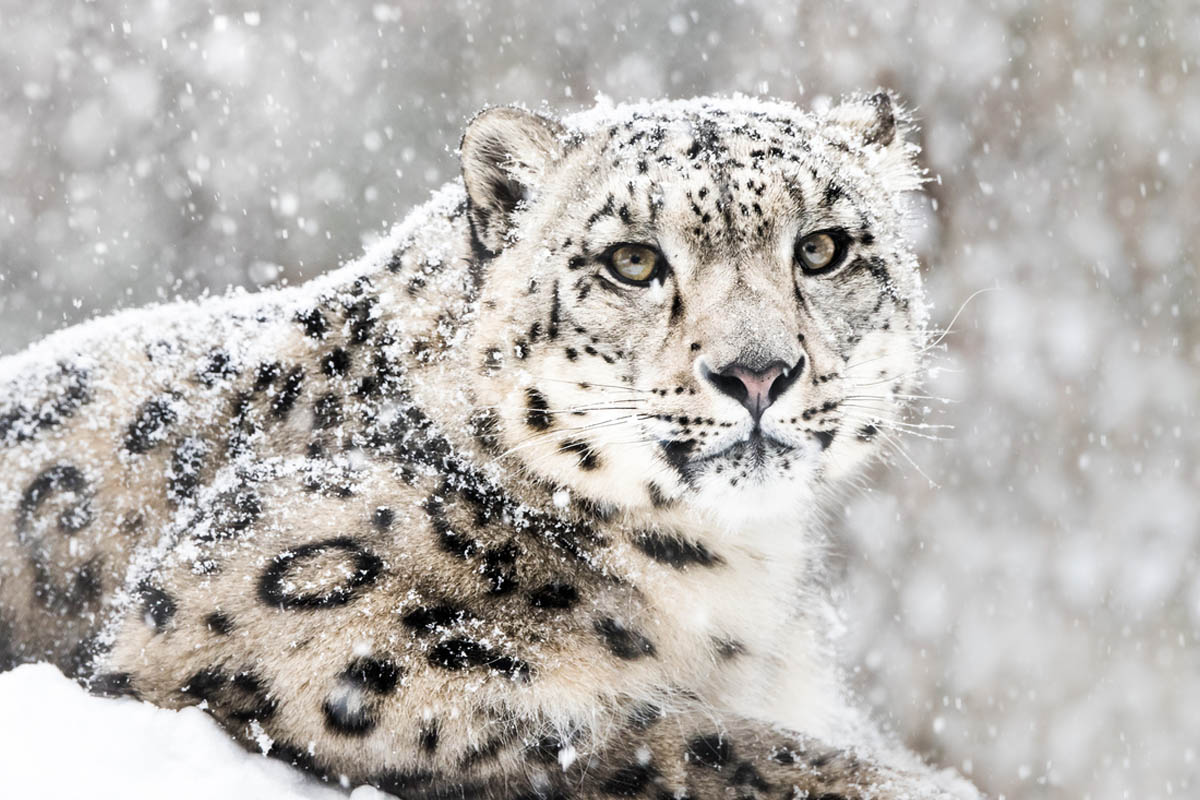Himachal Pradesh is home to 75 snow leopards, reveals a first-of-its-kind five-year systematic effort at a large regional scale in the Himalayan range where the incredible ‘Ghost of the Mountains’ live and are elusive by nature.
The estimation, part of Snow Leopard Population Assessment in India, carried out by the state’s wildlife wing with help from Mysore-based Nature Conservation Foundation by installing camera traps to help raise awareness about the importance of its conservation and protection, say experts.
Advertisement
They told IANS the assessment evolves understanding impacts of climate change on the wild cat. Also it enables initiating livelihood programmes that foster coexistence between the snow leopards and the local communities, whose cultures, traditions and livelihoods are deeply linked to local landscapes.
The maximum number of the snow leopards was reported in Lahaul-Spiti and Kinnaur districts. Its potential habitat also extends into the upper regions of Shimla, Kullu, Chamba and Kangra districts.
Globally they are found in 12 Asian countries. In India, they are found in the Himalayan states of Jammu and Kashmir, Ladakh, Uttarakhand, Arunachal Pradesh, Sikkim, besides Himachal Pradesh. They live in high mountain ecosystems.
Habitat destruction, invasive species, climate change and pollution are having an unprecedented impact on the snow leopard worldwide.
The snow leopard serves as an indicator of the health of the Himalayan ecosystems in terms of climate change and biodiversity. Its presence symbolizes ecosystem services such as fresh water and carbon sequestration that benefit human populations of billions living downstream.
The experts believe the conservation of snow leopards is synonymous with conservation of biological and cultural diversity and securing livelihoods of the ‘third pole’, spread across the Himalayas, Hindu Kush, Pamir, Tien-Shan and Altai mountains, and the Tibetan plateau.
According to the report ‘Status of snow leopard and prey in Himachal Pradesh’, Himachal, which takes a lead among Indian states, embarked on the task of robust assessments of snow leopard population in 2018 in partnership with the Nature Conservation Foundation.
By adapting scientifically robust techniques to estimate its population in a systematic effort that surveyed 26,000 sq km of its habitat, the exercise was complemented with population assessments of the prey species like bharal and ibex of snow leopard across the state.
In the vast inaccessible habitat, the camera trapping surveys were conducted to representatively sample all the strata — high, low and unknown. The team detected 44 individual snow leopards.
Its density ranged from 0.08 to 0.37 individuals per 100 sq km in the state. The trans-Himalayan regions of Spiti and Pin valley recorded the highest densities of snow leopards.
The trans-Himalayan region also supports the highest densities of wild prey. The estimate of blue sheep population size was 891 for Spiti, and the ibex population size estimate was 224 for the Pin valley, says the report.
Spiti and Tabo recorded highest densities of both snow leopards and their prey; while Chandra and Bharmour recorded the lowest densities of both snow leopards and their prey.
The camera-trapping survey recorded 28 species that includes carnivores, such as the brown bear, the black bear, the yellow throated marten, the stone marten, the masked palm civet, the Himalayan weasel; pheasants, such as the monal, the cheer pheasant, the koklass and the snow partridge; and ungulates, such as the musk deer.
Also the researchers spotted the common leopard and the snow leopard in the same camera trap at two stations in the Great Himalayan National Park, suggesting a habitat overlap between them.
Himachal Pradesh’s snow leopard landscape is divided into valleys made by large rivers like the Sutlej, the Chenab, the Beas, the Parvathi and their tributaries which include the Baspa, the Kugti, the Ravi, the Spiti and others.
The report reiterates the fact that local communities are the strongest allies for conservation, if their concerns can be factored into conservation planning.
Koustubh Sharma, Director, Science and Conservation at Snow Leopard Trust, told IANS, that in the 1980s a scientist in India wanted to study the snow leopards in Ladakh. He wanted to understand how snow leopards use space over time. He managed to catch one.
“Technology at that time only allowed radio signals that required this researcher to try to get the snow leopard in line of sight to know where it was. A few days later, he abandoned his plans of collaring more animals. He said the snow leopard was much more superior in fitness and ability to traverse ridgelines and long distances,” he said.
(Vishal Gulati can be contacted gulatiians@gmail.com)











